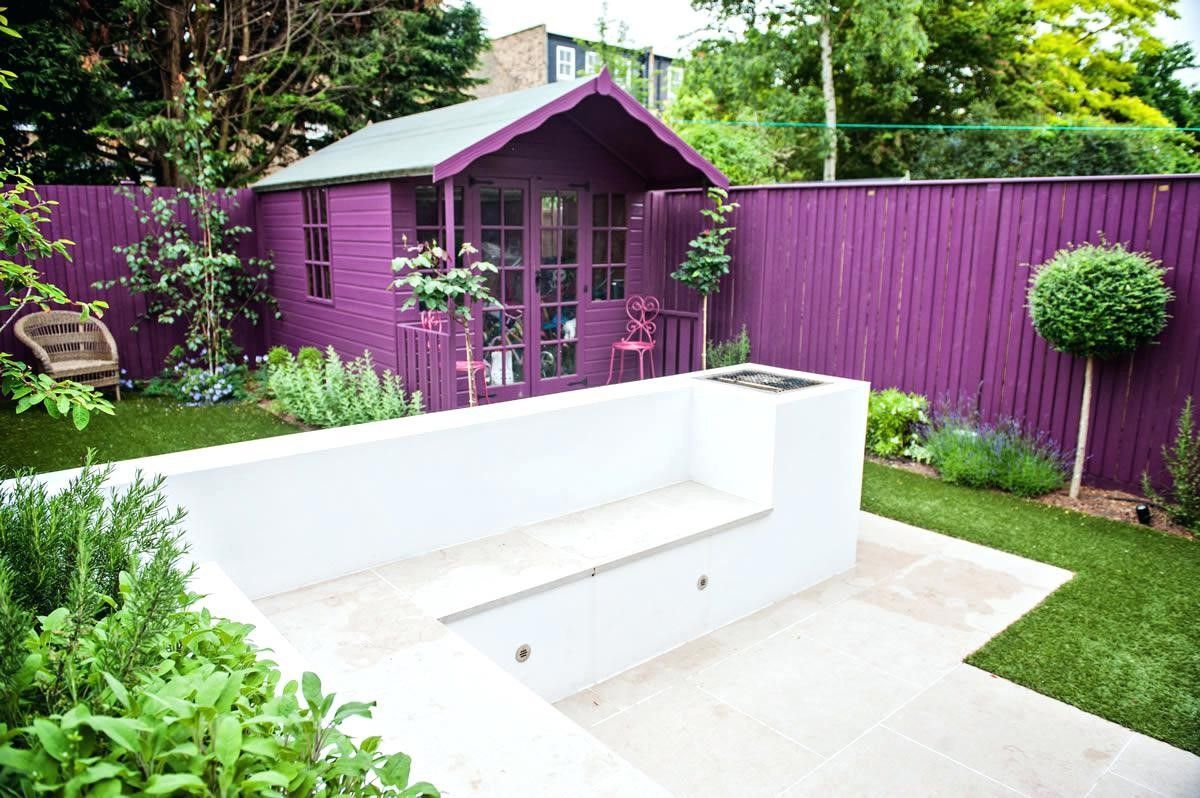

Articles
What Does A Purple Fence Mean
Modified: January 8, 2024
Discover the meaning behind a purple fence in this insightful article. Gain a deeper understanding of the symbolism and significance it holds.
(Many of the links in this article redirect to a specific reviewed product. Your purchase of these products through affiliate links helps to generate commission for Storables.com, at no extra cost. Learn more)
Introduction
Welcome to the fascinating world of colored fences, where each hue holds its own significance and meaning. In this article, we will explore the symbolism and history behind a rather curious color choice for fences: purple. While it may seem unusual to paint a fence purple, this hue carries a wealth of symbolism and cultural connotations that have piqued the interest of many.
Color symbolism has been a part of human culture for centuries. Different colors evoke various emotions and associations, and purple is no exception. Historically associated with royalty, wealth, and power, purple has always held a special place in societies throughout the world.
Understanding color symbolism in fences can shed light on the intentions and messages that individuals or communities may wish to convey. By exploring the historical significance of colored fences and the specific symbolism attached to purple, we can unravel the deeper meaning behind this peculiar choice of hue.
It’s important to note that the use of colored fences has evolved over time. What was once purely functional, used to mark boundaries and enclose livestock, has now become an expressive medium. Today, fences serve not only a practical purpose but also serve as a means of artistic expression, individuality, or community identity.
In different cultures and regions around the world, the symbolism and significance of purple fences can vary. While some may attach spiritual or religious interpretations to the color, others may see it as a symbol of creativity, independence, or even rebellion.
So, why paint a fence purple? The reasons can be as diverse as the individuals who make this bold choice. Practical considerations, personal preferences, or a desire to stand out and make a statement are all possible motivations.
In the following sections, we will delve deeper into the symbolism, history, and potential interpretations of purple fences, exploring the intriguing world of this unconventional color choice for fences.
Key Takeaways:
- Purple fences symbolize creativity, spirituality, and individuality, inviting curiosity and inspiring artistic expression. They serve as visual markers and community identifiers, adding vibrancy and uniqueness to the environment.
- The color purple transcends mere aesthetics, offering practical benefits such as increased visibility, clear boundary marking, and community identification. It represents a desire to break away from conventions and embrace individuality.
Read more: What Does A Purple Light On Alexa Mean
The Symbolism of Purple
Purple is a color that has held significant symbolism in various cultures throughout history. Often associated with royalty, luxury, and power, this rich and vibrant hue carries a sense of elegance and sophistication. Its rarity in nature and difficulty in obtaining the dye in ancient times made it a symbol of wealth and status.
In ancient Rome, purple was exclusively worn by emperors and high-ranking officials. The color’s association with royalty extended into the Byzantine Empire, where purple robes were reserved for the empress and members of the imperial family.
Similarly, in ancient Egypt, purple was highly regarded and reserved for pharaohs and other members of the ruling elite. The vibrant color was linked to the sun and represented divinity and power.
Beyond its connection to royalty, purple also carries a sense of spirituality and mysticism. In many religious and spiritual practices, purple is associated with introspection, spirituality, and higher consciousness. It is often seen as a color that promotes inner peace, harmony, and balance.
Psychologically, purple is believed to stimulate creativity and imagination. It is a color that encourages individuality, artistic expression, and unconventional thinking. By incorporating purple into their surroundings, individuals may seek to inspire and unleash their creativity.
Furthermore, purple is often linked to feelings of luxury, indulgence, and opulence. It is a color that stimulates a sense of abundance and prosperity. Thus, painting a fence purple can be seen as a statement of affluence and a desire to create an environment of extravagance and grandeur.
Understanding the symbolism of purple helps us interpret the choice of this color for fences. It can serve as a visual representation of the values, aspirations, and desires of the individuals or communities who adopt it. Whether it be a nod to historical royalty, a connection to spirituality, or an expression of creativity, a purple fence can make a bold statement and create a distinct visual impact.
Understanding Color Symbolism in Fences
Color symbolism plays a crucial role in the world of fencing. From traditional wooden fences to modern metal structures, the color chosen for a fence can convey a variety of meanings and messages. Understanding color symbolism helps us interpret the intentions and emotions behind these choices.
Colors have the power to evoke emotions, create moods, and influence perceptions. They can communicate messages both consciously and subconsciously. When it comes to fences, color symbolism can vary depending on cultural, historical, and personal associations.
Some common color symbolism in fences includes:
- White: Often associated with purity, cleanliness, and innocence, white fences bring a sense of elegance and simplicity. They can symbolize serenity and a desire for a peaceful environment.
- Black: Black fences tend to evoke a sense of power, formality, and sophistication. They can also represent a boundary or a sense of protection.
- Brown: Brown fences are often linked to the natural world, as they resemble the color of wood. They can convey a sense of warmth, stability, and a connection to nature.
- Green: Green fences are commonly associated with growth, vitality, and harmony. They symbolize life, renewal, and a connection to the environment.
- Blue: Blue fences often represent calmness, tranquility, and stability. They can evoke a sense of trust and security.
- Red: Red fences are bold and eye-catching, representing strength, power, and passion. They can also symbolize warning or danger.
When it comes to purple fences, the color symbolism takes on a unique and intriguing meaning. Purple represents a combination of the power and richness of red and the calmness and spirituality of blue. It represents a balance between passion and introspection, making it a color that stimulates creativity and invites contemplation.
The symbolism attached to purple fences can vary depending on the cultural and regional contexts. It is important to consider the specific meanings associated with purple in different societies to fully grasp the intended symbolism.
Overall, color symbolism in fences is a fascinating aspect of their design. The color chosen can reflect the personality of the homeowner, convey a sense of cultural heritage, or simply serve as a way to create a visually appealing and memorable space.
Historical Significance of Colored Fences
The use of colored fences dates back centuries and carries deep historical significance. In ancient times, it was common for fences to be painted or adorned with colors for various practical and symbolic reasons.
One of the earliest known instances of colored fences can be traced back to ancient China. The Great Wall of China, built during the Ming Dynasty, featured vibrant and brightly colored gates and fences. These colorful embellishments not only added to the wall’s aesthetic appeal, but they also served as a means of visual communication and wayfinding. Different colors and symbols on the fences were used to designate specific sections or entrances.
In medieval Europe, fences surrounding castles and fortresses were often adorned with colored banners and flags. This served both practical and symbolic purposes. The colors and symbols displayed on the fences represented the kingdom or noble family’s coat of arms, signifying ownership and identity. It also acted as a visual deterrent, warning potential invaders of the fortress’s strength and heritage.
During the Victorian era, elaborate wrought iron fences became popular, particularly in grand estates and public gardens. These ornate fences were often painted in rich, vibrant colors such as gold, green, or black. The colors were chosen to match the surrounding architecture or to convey a sense of opulence and grandeur. These fences were a symbol of status and could be seen as a reflection of the owner’s wealth and taste.
Colored fences also played a significant role in African-American history. In the era of slavery, the “Underground Railroad,” a network of safe houses and secret routes, used fences as a means of covert communication. Certain fence colors or patterns indicated that a particular house was a safe refuge for escaped slaves. These colored fences acted as a guiding light, helping individuals in their journey to freedom.
As time progressed, the use of colors on fences became more diverse. Vibrant hues and creative design choices adorned fences in urban neighborhoods, indicating cultural pride and community belonging. Street artists and muralists began using fences as canvases, transforming them into vibrant works of art that reflected the spirit and identity of the neighborhood.
The historical significance of colored fences highlights the enduring power of visual communication and symbolism. From practical communication in ancient China to the expression of cultural identity in modern times, colored fences have always played a role in shaping our perceptions and connections with the world around us.
Purple Fences in Modern Society
In modern society, purple fences have gained attention for their unique and eye-catching presence. While the more conventional colors like white, black, or brown still dominate the landscape, purple fences stand out as a bold and unconventional choice.
The use of purple in fences can be seen as a form of artistic expression and individuality. Homeowners or communities who choose to paint their fences purple bring a vibrant and enigmatic touch to their surroundings. Purple fences create a sense of intrigue and curiosity, inviting passersby to take notice and engage with their environment.
Moreover, purple fences can serve as a symbol of uniqueness and nonconformity. In a sea of more traditional colors, a purple fence stands apart, making a statement of individuality and willingness to defy societal norms. It can be an embodiment of the homeowner’s personality and a visual representation of their desire to stand out and be different.
Additionally, some individuals may choose purple fences for their historical and cultural significance. The alluring connections to royalty and spirituality associated with purple can be embraced as a way to pay homage to the past or connect with one’s cultural heritage.
Purple fences also have the power to inspire and ignite creativity. The color purple is often associated with artistry and imagination. By surrounding oneself with this hue, whether it be in the form of a fence or other elements of the environment, individuals can create a space that encourages and fosters their creative energy.
Another practical consideration for painting fences purple is that it can help set a property apart in real estate markets. In areas where competition is high, a purple fence can attract attention and leave a memorable impression on potential buyers. It can be seen as a unique selling point and add value to the property.
Furthermore, purple fences can play a role in community projects and urban development initiatives. In some cities, neighborhoods or artists may collaborate to paint fences in vibrant colors, including purple, as a way to beautify the area and foster a sense of community pride and identity. These artistic displays can transform once mundane and utilitarian fences into captivating works of art.
Overall, purple fences in modern society symbolize individuality, creativity, and a desire to stand out. They bring a touch of vibrancy and mystery to the landscape, capturing the attention and imagination of those who encounter them. Whether used for personal expression, cultural connection, or community revitalization, purple fences are a visual testament to the power of color and individual creativity in shaping our surroundings.
In many places, a purple fence is used to indicate that the property is a safe space for LGBTQ+ individuals. It is a symbol of inclusivity and support.
Read more: What Does Locks On A Fence Mean
Cultural and Regional Variations in Purple Fences
The symbolism of purple fences can vary greatly across different cultures and regions. While purple is generally associated with royalty and spirituality, its specific connotations can differ based on historical, cultural, and regional contexts. Let’s explore some of the variations in the meaning of purple fences around the world.
In Western cultures, purple is often perceived as a color of luxury, creativity, and individuality. Painting a fence purple can be seen as a way to express personal style or make a statement of uniqueness. It may reflect a desire to break away from conventional norms and embrace a more vibrant and unconventional approach to life and aesthetics.
In some Eastern cultures, purple holds a spiritual significance. In Hinduism, purple is associated with enlightenment and higher consciousness. The deep purple shade called “royal purple” has been traditionally associated with spirituality and divine connections.
Africa, with its diverse cultural heritage, has its own unique interpretations of purple. In some parts of the African continent, purple is connected to royalty and plays a significant role in traditional ceremonies and attire. In other African cultures, purple represents healing and transformation, symbolizing the transition from one phase of life to another.
Native American cultures hold spiritual beliefs associated with different colors, including purple. Some tribes consider purple as a color of healing and spirituality, while others associate it with wisdom and spiritual guidance. The use of purple in fences may reflect these spiritual beliefs and signify a connection to the natural world.
In Latin American cultures, purple can be seen as a symbol of passion and sensuality. It is often associated with festivals, celebrations, and joyful gatherings. A purple fence in these regions may represent a desire to infuse life with excitement, vibrancy, and a sense of celebration.
It’s important to note that within each culture, specific regional variations may also exist. Different communities and subcultures may interpret the meaning of purple fences in their own unique ways, influenced by local traditions, historical references, and personal experiences.
Regardless of the specific cultural or regional interpretation, one thing remains consistent – purple fences are a visual expression of individuality, spirituality, and creativity. They bring a sense of uniqueness and distinction to the surrounding environment, encouraging dialogue, curiosity, and a deeper appreciation for the diverse ways in which color is perceived and valued around the world.
Potential Interpretations of Purple Fences
The symbolism of purple fences is subjective and can be open to various interpretations. The rich and captivating nature of the color purple lends itself to a multitude of meanings and associations. Here are some potential interpretations of purple fences:
Creativity and Imagination: Purple is commonly associated with artistic expression, creativity, and imagination. A purple fence may symbolize a homeowner’s passion for the arts or their desire to create a visually stimulating environment. It can serve as a reminder to embrace and nurture one’s creative side.
Spirituality and Mysticism: Purple has long been linked to spirituality and higher consciousness. It is a color often associated with meditation, introspection, and spiritual growth. A purple fence may signify a homeowner’s quest for inner peace, enlightenment, or connection to a higher power.
Royalty and Prestige: Purple has a historical association with royalty and luxury. It was once a color reserved for kings and queens, symbolizing power and status. Painting a fence purple may convey a sense of elegance, sophistication, and a desire to create an environment of regal grandeur.
Individuality and Uniqueness: Purple is a bold and unconventional color choice, especially for a fence. Choosing a purple fence can be seen as an expression of individuality and a willingness to stand out from the crowd. It signifies a homeowner’s desire to break free from societal norms and embrace their own distinct style.
Peace and Tranquility: Purple, particularly softer shades like lavender, is also associated with peace, harmony, and tranquility. A purple fence may symbolize a homeowner’s quest for serenity and a peaceful living environment. It can serve as a visual reminder to create a space of calmness and relaxation.
Cultural Pride and Symbolism: Purple holds different cultural and regional meanings across the world. In some cultures, purple is connected to specific traditions, festivals, or historical events. Painting a fence purple may reflect a homeowner’s cultural pride and their desire to celebrate and honor their heritage.
Sensuality and Passion: In certain interpretations, purple is also associated with sensuality and passion. It is a color that awakens emotions and stimulates the senses. A purple fence may represent a homeowner’s desire to infuse their surroundings with a sense of excitement, romance, and sensual energy.
It’s important to keep in mind that these interpretations are not definitive, and their meaning will ultimately depend on the individual or community who chooses a purple fence. Personal experiences, cultural backgrounds, and individual perspectives will shape the symbolism and significance of a purple fence, making it a unique expression of identity and intention.
Practical Reasons for Painting Fences Purple
While the symbolism and aesthetics of a purple fence can be captivating, there are also practical reasons why individuals or communities may choose to paint their fences in this unique hue.
Visibility and Safety: Purple stands out and catches the eye. Painting a fence purple can enhance its visibility, especially in areas where fences need to be easily distinguished, such as near roadways or in public spaces. This increased visibility can contribute to safety by alerting people to the presence of a fence and minimizing the risk of accidents or collisions.
Clear Boundary Marking: Purple fences can serve as clear markers, distinguishing property boundaries. In large residential areas or multi-unit complexes, having a distinctive fence color like purple can help residents easily identify their own property lines, reducing confusion and potential disputes.
Community Identification: In some instances, a community may choose to paint their fences purple as a way to foster a sense of unity and community identification. This can be particularly useful in neighborhoods where houses may have similar designs or where a shared identity is desired. A purple fence can act as a visual symbol of community pride and cohesion.
Unique Selling Point: When it comes to real estate, standing out from the competition is essential. A purple fence can make a property memorable and give it a unique selling point. It can attract potential buyers or renters who are looking for a distinctive and eye-catching feature, setting the property apart from others on the market.
Artistic Expression: Choosing a purple fence can also be a way to express creativity and artistic sensibilities. For individuals with a passion for design and aesthetics, a purple fence can act as a canvas for expressing their artistic vision. It allows them to transform a utilitarian structure into an art installation that reflects their personal style and adds beauty to the surrounding environment.
Embracing Unconventionality: Painting a fence purple can be an opportunity to break away from the conventional choices of white, brown, or black. It represents a departure from the norm, allowing homeowners to display their unique personality and willingness to embrace unconventional choices. A purple fence can serve as a statement of individuality and a desire to think outside the box.
Ultimately, practical reasons for painting fences purple can vary based on individual circumstances and goals. Whether it’s to enhance safety and visibility, foster community pride, or make a property more memorable, a purple fence can offer both functional and aesthetic benefits to homeowners and communities alike.
Conclusion
Exploring the symbolism, cultural variations, and practical considerations of purple fences has revealed a world of imagination and individuality. Purple, with its historical ties to royalty, spirituality, and creativity, has the power to captivate and inspire. Painting a fence purple goes beyond mere aesthetics; it serves as a means of personal expression and a statement of uniqueness.
From ancient times to modern society, the color purple has held significance in various cultures and regions. Its interpretation can vary, reflecting personal beliefs, cultural heritage, and artistic sensibilities. Purple fences can symbolize creativity, spirituality, royalty, or a desire to stand out. They serve as visual markers, community identifiers, and even marketing tools in the real estate industry.
Practically, purple fences offer increased visibility and safety, clear boundary marking, and the opportunity for artistic expression. They allow individuals and communities to create distinct spaces that inspire creativity and foster a sense of community pride.
As we consider the meaning and significance behind purple fences, it’s clear that the color transcends mere paint on a fence. It represents a desire to break away from conventions, embrace individuality, and evoke emotions and curiosity. Purple fences invite us to explore our own creative and imaginative depths, encouraging us to think beyond the ordinary and embrace the extraordinary in our daily lives.
So, the next time you come across a purple fence, take a moment to appreciate the stories and intentions behind its color choice. Let it inspire you to embrace your own individuality, creativity, and uniqueness. And perhaps, it might even encourage you to add a touch of purple to your own surroundings, inviting others to wonder and engage with the rich symbolism it holds.
Frequently Asked Questions about What Does A Purple Fence Mean
Was this page helpful?
At Storables.com, we guarantee accurate and reliable information. Our content, validated by Expert Board Contributors, is crafted following stringent Editorial Policies. We're committed to providing you with well-researched, expert-backed insights for all your informational needs.
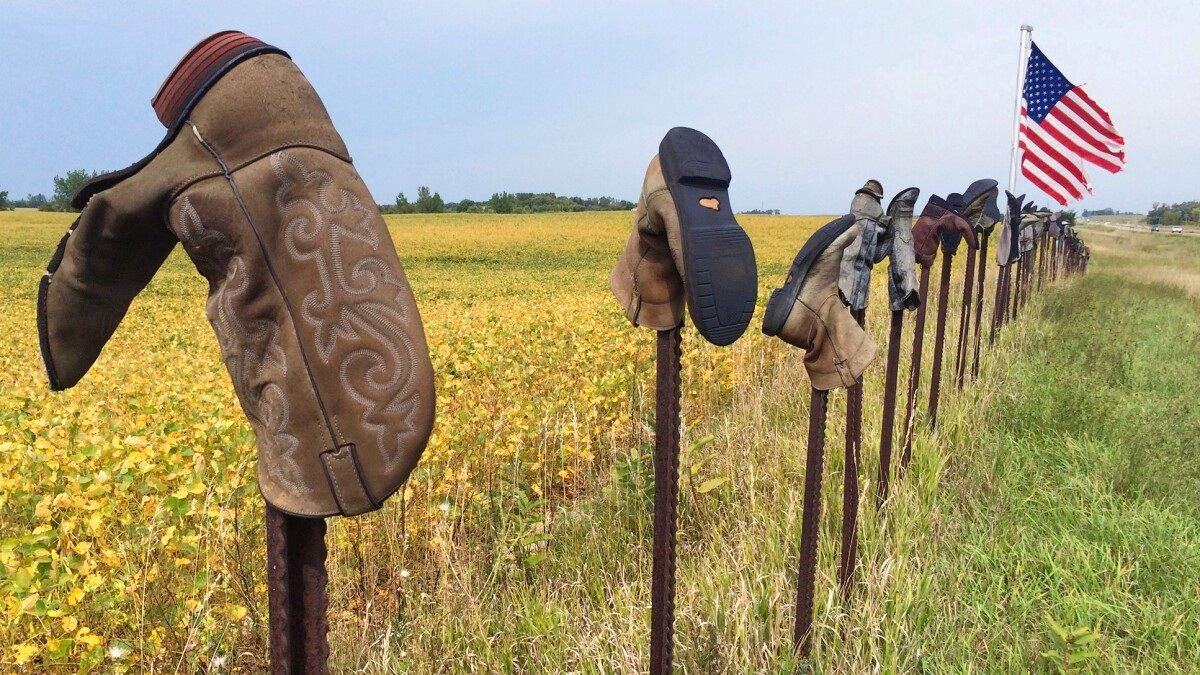
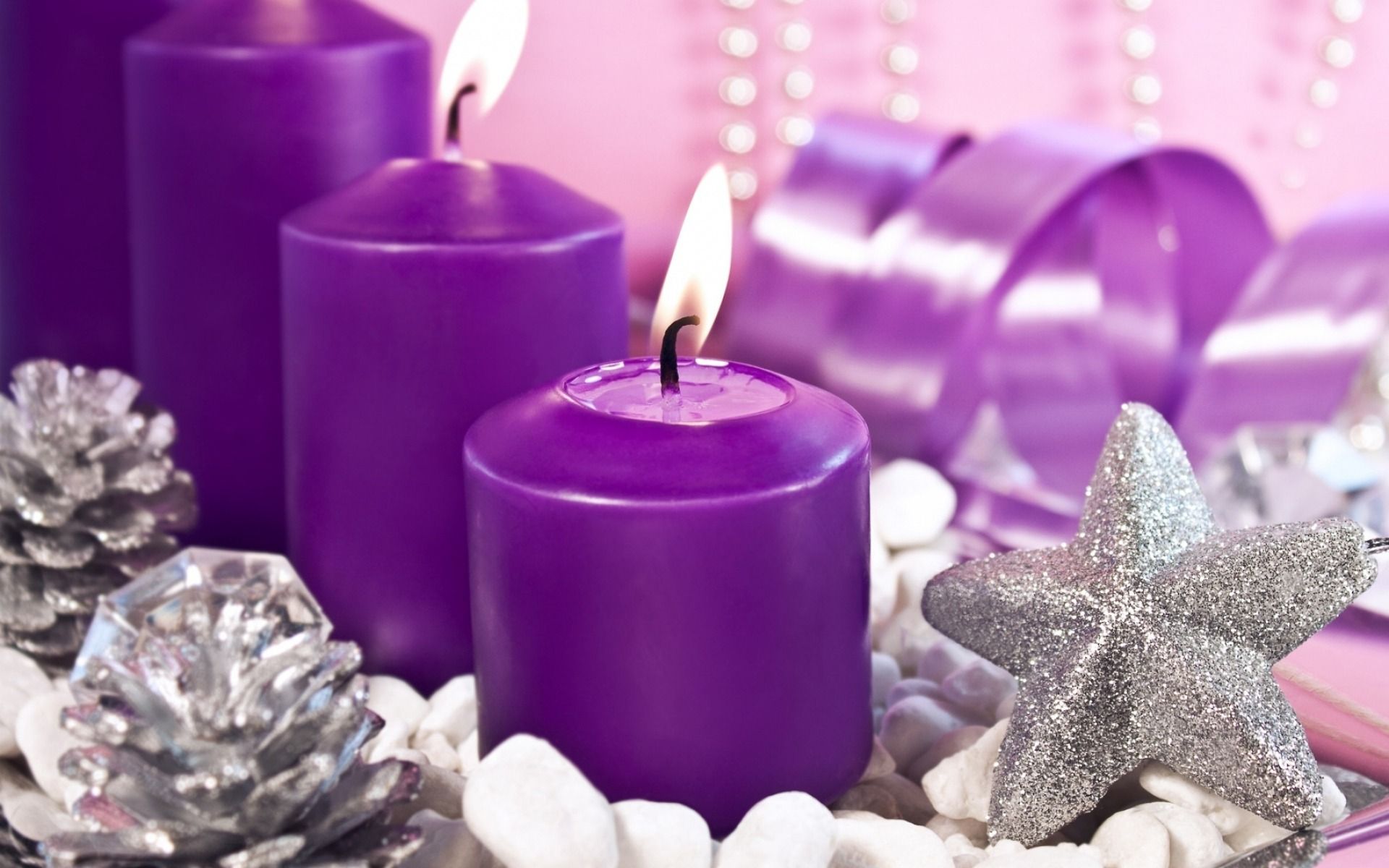
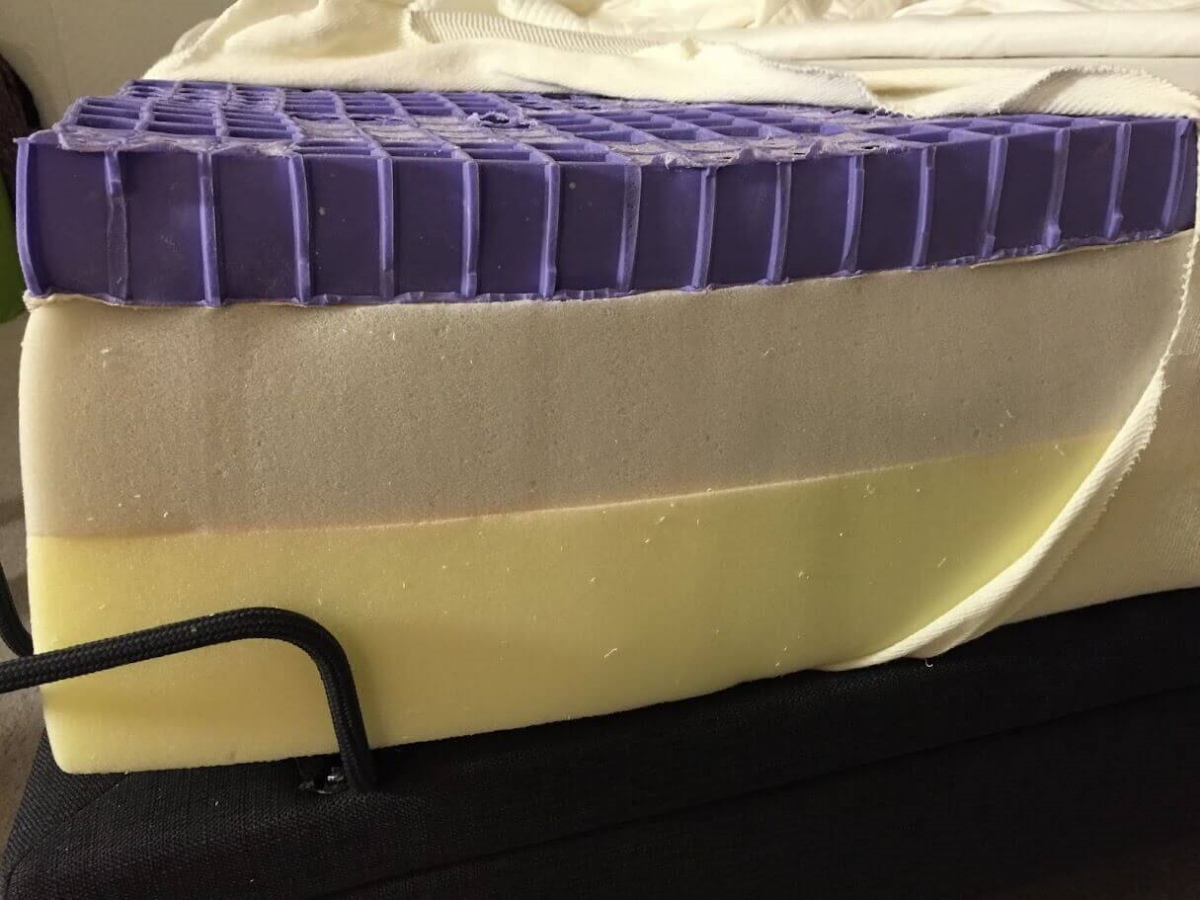






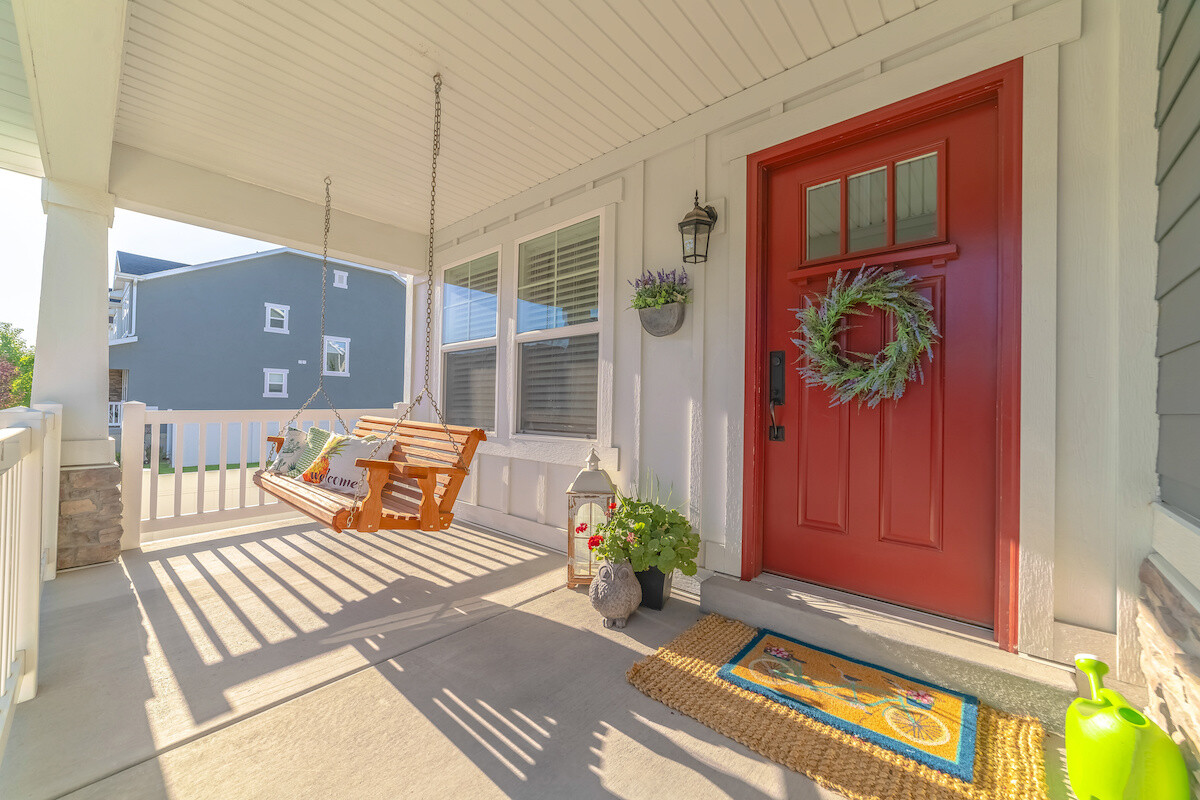
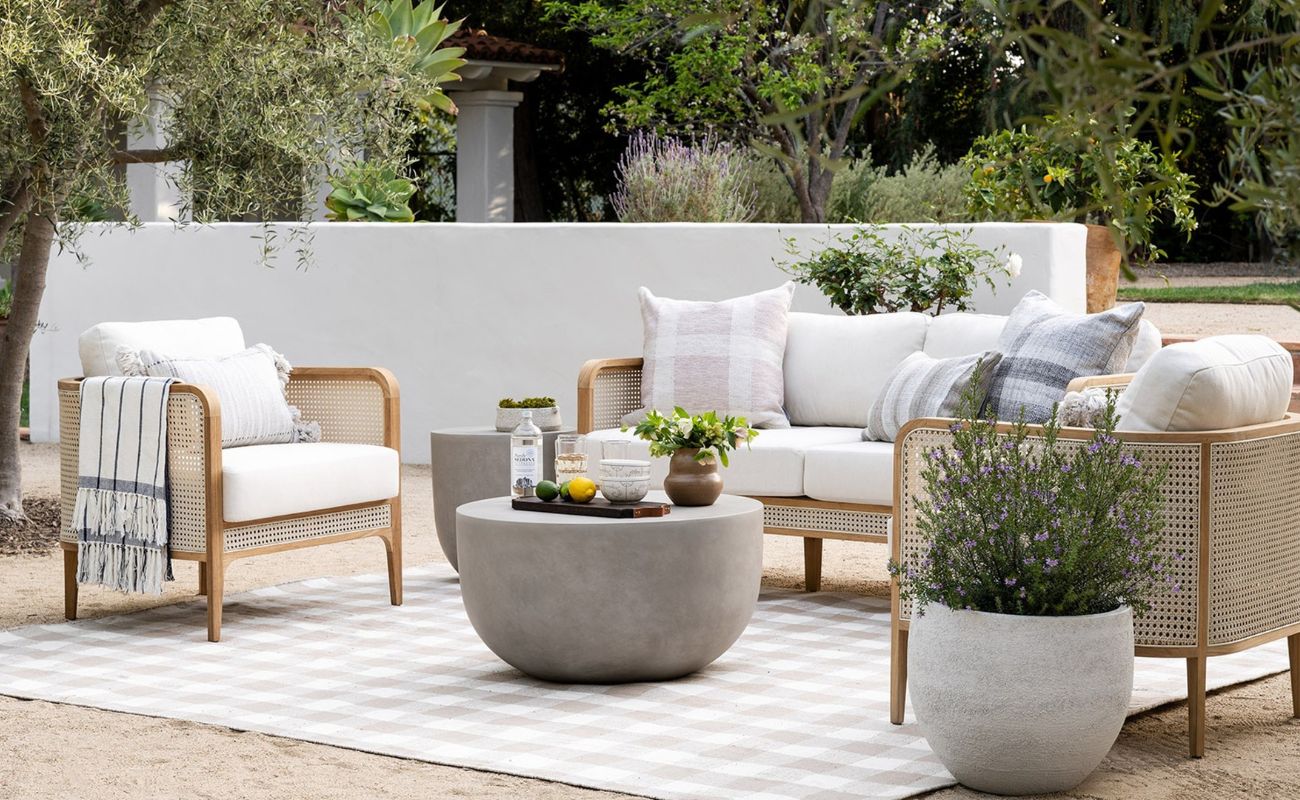

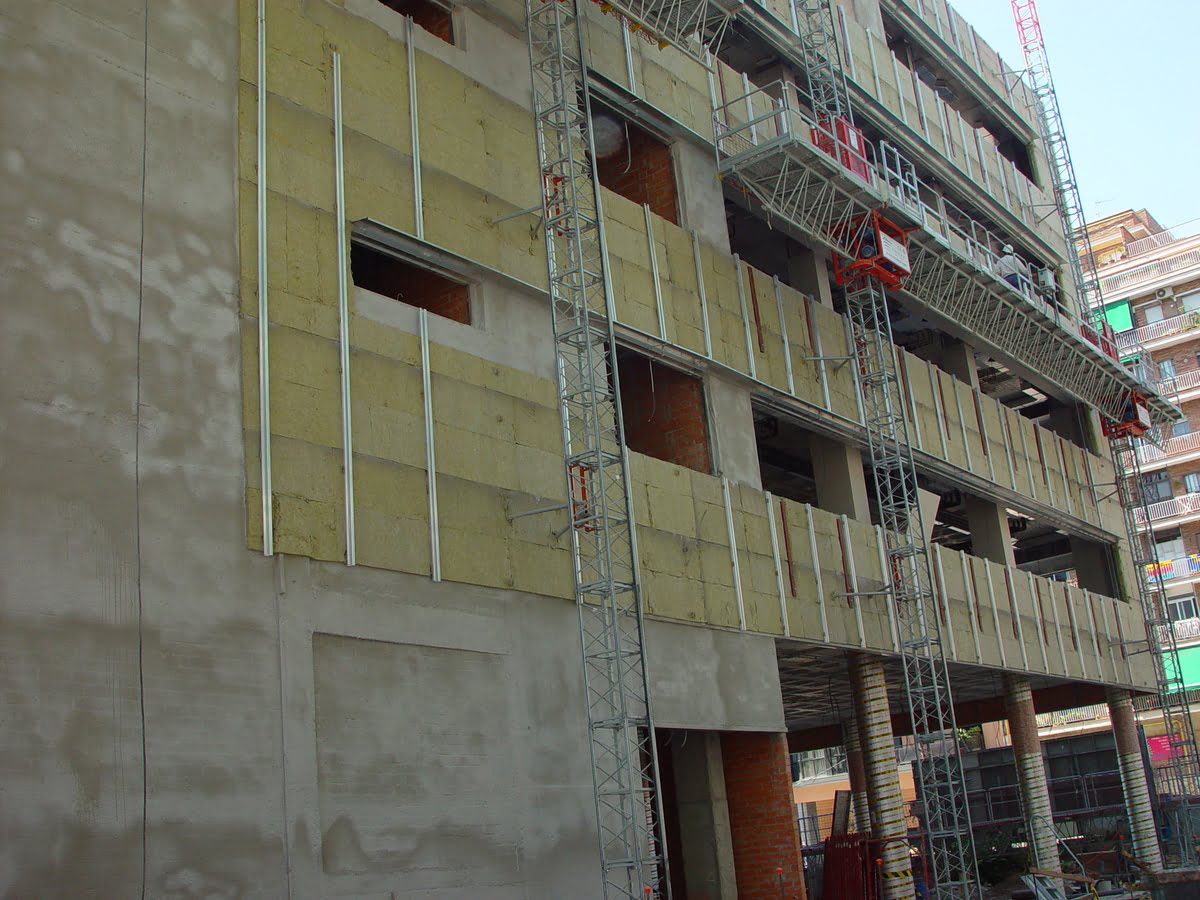


0 thoughts on “What Does A Purple Fence Mean”